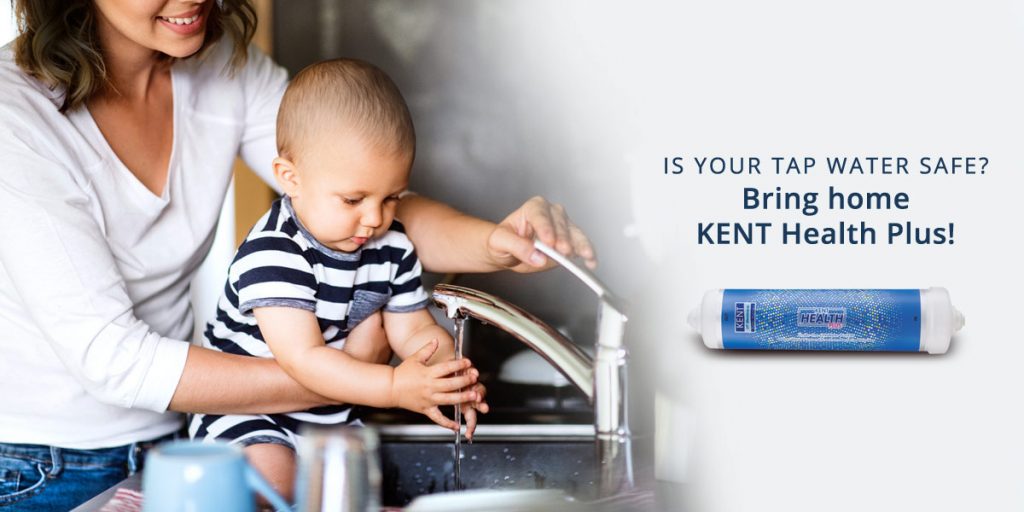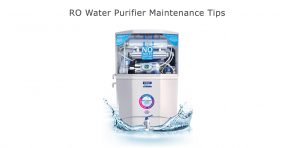Best Way to Remove Bacteria from Your Tap Water
The recent global health emergency has put the need for hygiene right at the top for every single person. We have been taking care of the water we drink by using advanced RO water purifiers, keeping our fruits and vegetables clean and safe for consumption with the help of vegetable and fruit disinfectant, washing and sanitizing our hands multiples times, properly sanitizing products bought from outside and even avoiding stepping outside as much as we can. But if you observe closely, most of the tasks related to cleaning or maintaining hygiene involve water. And tap water is the most common source of water for every household.
Is the tap water you use for cleaning your food, your home and yourself, hygienic enough to be used? Did you know that your tap water may contain multiple bacteria, viruses and suspended impurities in water?
How to remove bacteria from your tap water?
Tap water is not just used for household chores but for body cleansing as well. Imagine brushing your teeth, washing your face, and taking a bath without realising that the water you are using to clean is full of bacteria. Here are some of the common practices to remove impurities like bacteria from your tap water.
Ways to remove bacteria from tap water
The most important thing to understand here is that the need for pure drinking water and the need for making tap water safe for use are different. And they need different solutions – a specific one to be more precise.
Boiling – the most common method. Does it work?
The most used method for purifying water, boiling may remove Cryptosporidium from the water and reduce other pathogens, but it does not 100% purify the water. Also, this sounds good for drinking purpose, but for other household chores, this one is surely an impractical method.
Natural UV rays – is it practical?
Keeping the water under sun lets the ultraviolet rays kill the pathogens in the water. But it may invite insects and other contamination. Again, not a very practical solution for purifying water for daily chores.
Filtration – can you filter more than drinking water?
While filtration is a great way to purify your drinking water, using the method for filtering tap water for every household chore sounds impractical.
Best method to remove bacteria from tap water?
KENT Health Plus is a Next-Gen UF Water Purifier that can be installed under the kitchen sink, home bathroom sink, and washbasin. It easily purifies tap water infected with bacteria and other impurities.
Some of the features of this advanced water purifier include:
- Purified water is free from bacteria and viruses.
- Can be installed discreetly under spaces so that it does not hamper the overall look of your room.
- Works without electricity.
What’s the final solution?
Conventional ways of filter-all purification methods are no longer suitable for specific, modern needs. Especially in today’s time when hygiene and safety of health are paramount. While water is taking care of all your cleaning needs at home, ensure that water is pure enough to trust. After all, it is about your loved one’s health, and they deserve nothing but the best and the safest.
Frequently Asked Questions
1. How do you kill bacteria in tap water?
To kill bacteria in tap water, there are a few methods you can use. Boil tap water for at least one minute to effectively kill bacteria and other pathogens. Another method is using water disinfection tablets or liquid chlorine bleach. Follow the instructions on the tablets or bleach bottle to treat the water properly. Additionally, using a water purifier or filter specifically designed to remove bacteria can be effective in killing bacteria and providing clean drinking water.
2. Does RO water remove bacteria?
Yes, Reverse Osmosis (RO) water purification systems are effective in removing bacteria from water. RO systems use a semi-permeable membrane to remove impurities, including bacteria, viruses, and other contaminants. The membrane has very tiny pores that prevent the passage of bacteria and larger particles, resulting in purified water. However, it’s important to note that the effectiveness of an RO system in removing bacteria depends on factors such as the quality of the membrane and the maintenance of the system. Regular maintenance and periodic replacement of filters are essential to ensure optimal performance in removing bacteria.
3. How can I purify my water naturally?
There are several natural methods to purify water. One method is boiling water for at least one minute, which kills most microorganisms. Another method is using activated charcoal or carbon filters, which can remove impurities and improve taste. Additionally, sunlight can be used for solar disinfection (SODIS) by leaving clear plastic bottles of water in direct sunlight for several hours. Filtration using natural materials like sand, gravel, and cloth can also be effective. However, it’s advisable to use a combination of methods for optimal water purification.





